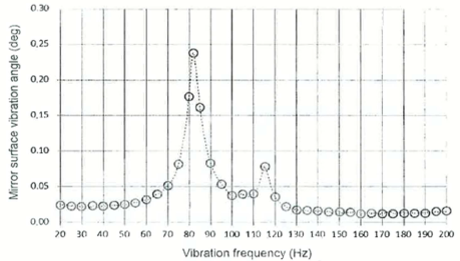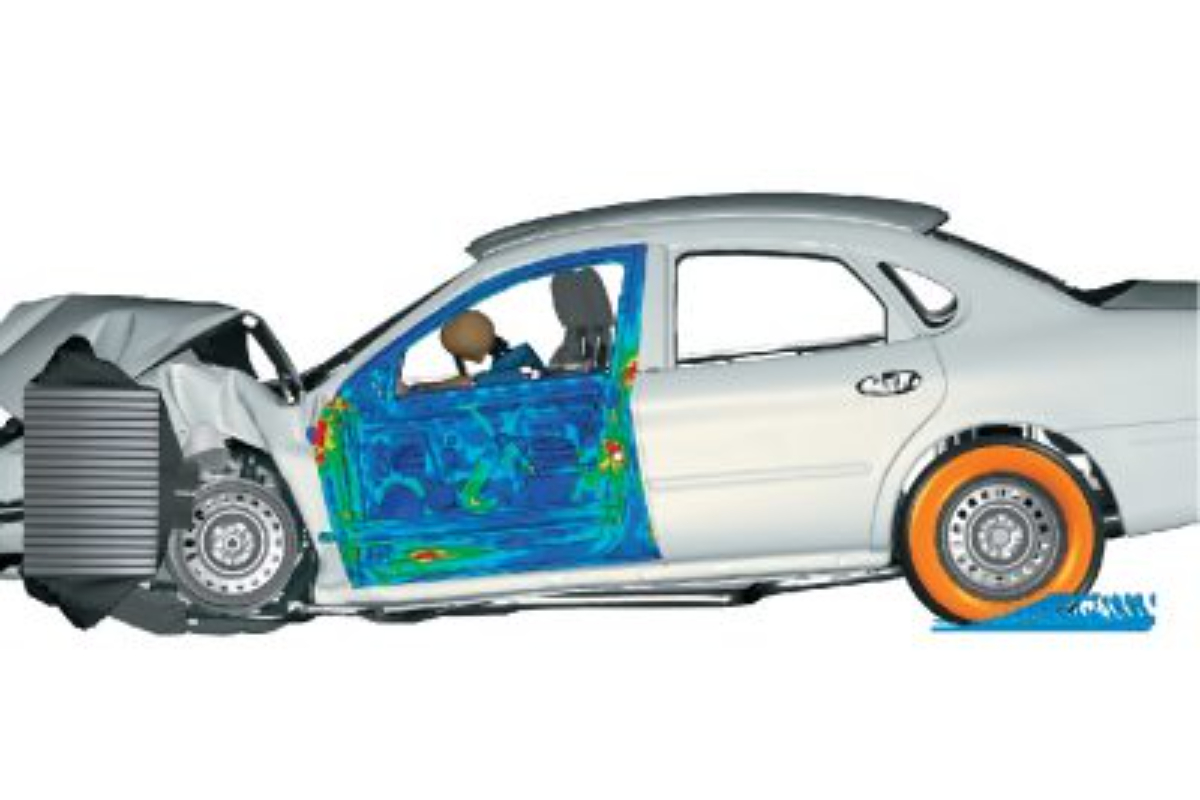Problem Statement
While driving a car at high speed or through the bumpy road surfaces, the rear-view and side-view mirror surface happens to vibrate. Once the vibration frequency hit the resonance frequency of the mirror, it will leads to blurry images reflected from the mirror and affect sight of the drivers to clearly identify the approaching vehicles from the rear.
CAE Analysis (Calibration Model)
An accurate simulation model is produced after conducting the CAE analysis and result correlation for the calibration model. By using the simulation settings defined, the simulation is conducted using Abaqus on the new mirror design to obtain its resonance frequency and chattering angle.


Result Correlation (Calibration Model)
By comparing the test results with simulation, the simulation settings are refined to close the gap between the results from simulation and testing.
CAE Analysis (New Model)
An accurate simulation model is produced after conducting the CAE analysis and result correlation for the calibration model. By using the simulation settings defined, the simulation is conducted using Abaqus on the new mirror design to obtain its resonance frequency and chattering angle.


Design Optimization (New Model)
The new mirror design is optimized using Abaqus + Isight in order to pass the test requirements and reduce the material cost
Takeaway
At the end of this project, a CAE analysis report will be produced which contains an optimized mirror design that pass the test requirements.

Car Mirror Chattering CAE Analysis
While driving a car at high speed or through the bumpy road surfaces, the rear-view and side-view mirror surface happens to vibrate. Once the vibration frequency hit the resonance frequency of the mirror, it will leads to blurry images reflected from the mirror and affect sight of the drivers to clearly identify the approaching vehicles from the rear.
By performing Modal Analysis using Abaqus, the resonant frequencies and chattering angle of the car mirror due to different vibration directions can be identified. By comparing the results from simulation and testing, simulation settings can be refined to close the gap between the results from simulation and testing. Through observing the vibration pattern of the mirror simulated by using Abaqus, design optimization (if needed) which includes geometry / material changes can be done with the aim to pass the test requirements and reduce the material cost.
Frequently Asked Questions
Mirror chattering test one of the important test for both car inner and side mirror to evaluate the chattering performance of the car mirrors under a range of vibration frequency and amplitude.
During mirror chattering test, the maximum chattering angle of the mirror is recorded throughout a range of vibration frequency and compare with the test requirement.
CAE Analysis by using Abaqus helps in evaluate the chattering performance of the car mirrors before producing the mirror prototype for the chattering test. An optimized mirror design that pass the test requirements can be produced through CAE analysis.
Depending on the scope, the charges depend on the man-day and measurement services included. We are very transparent on the charges. Please contact us to find out more.
Growth is Hard, But We’ve Got You
Don’t hesitate and book your call today to change the future.
Related Product
We start with the end in mind, together with qualitative and quantitative data collection and analysis, we create a business strategy that ensure our clients achieve their goals and experience measurable values.
ABAQUS
The Abaqus Unified FEA product suite offers powerful and complete solutions for both routine and sophisticated engineering problems covering a vast spectrum of industrial applications.
Key Takeaways
Lorem ipsum dolor sit amet, consectetur adipiscing elit, sed do eiusmod tempor incididunt ut labore et dolore.
Lorem ipsum dolor sit amet, consectetur adipiscing elit, sed do eiusmod tempor incididunt ut labore et dolore.
Lorem ipsum dolor sit amet, consectetur adipiscing elit, sed do eiusmod tempor incididunt ut labore et dolore.
Lorem ipsum dolor sit amet, consectetur adipiscing elit, sed do eiusmod tempor incididunt ut labore et dolore.
Lorem ipsum dolor sit amet, consectetur adipiscing elit, sed do eiusmod tempor incididunt ut labore et dolore.
Lorem ipsum dolor sit amet, consectetur adipiscing elit, sed do eiusmod tempor incididunt ut labore et dolore.



